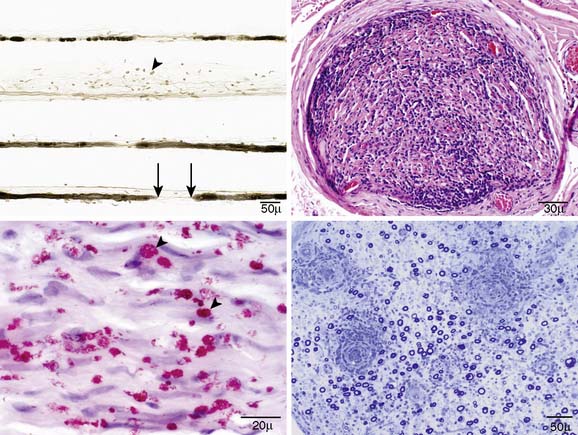Figure 68-1 First thermoregulatory sweat test (yellow areas indicate anhidrosis): impaired sweating of the right forearm, left greater than right leg, bilateral thighs, dorsum of the feet, and forehead (left); follow-up thermoregulatory sweat test: impaired sweating of the left greater than right distal legs and feet, right dorsal forearm, and ulnar hand and fingers (right).

Figure 68-2 Sural nerve biopsy: Teased fiber preparation: axonal degeneration (top row), rod-shaped organisms around fibers (arrowhead), and segmental demyelination (between arrows) (upper left); hematoxylin and eosin paraffin cross-section: increased inflammation within a nerve fascicle (upper right); Fite’s stain: many acid-fast bacilli with globi formation (multiple organisms in macrophages) (arrowheads) (lower left); methylene blue semithin section: myelinated fiber loss and perivascular inflammation in a nerve fascicle (lower right).
She returned home for treatment, and she was given a 2-year course of clofazimine, minocycline, and ofloxacin, and was also treated with prednisone. She returned for follow-up at our institution nearly 2 years after her initial leprosy diagnosis. She noticed that her prior symptoms had not improved, but she had also developed tingling, burning pain in her hands bilaterally. She noted that about 7 months previously, she developed significant left foot, ankle, and lower leg swelling and warmth. She did not recall a prior injury to the foot or ankle. She was given a diuretic locally, then treated with cephalexin for possible cellulitis, without improvement; ultrasound of her leg was negative for deep vein thrombosis (DVT).
A magnetic resonance imaging (MRI) scan of the left foot and ankle was performed, and the study showed changes of neuropathic arthropathy, with complete talonavicular joint collapse, with joint subluxation, osseous fragmentation with debris, and joint effusion. An insufficiency fracture of the calcaneus was also noted. The patient was diagnosed with Charcot’s joint.
Repeat thermoregulatory sweat test was performed, and showed marked anhidrosis of the left greater than right distal legs and feet and the right distal forearm, ulnar hand and fingers, with distal changes (particularly in the area of the left Charcot joint) more prominent than in the prior study (see Fig. 68-1).
Stay updated, free articles. Join our Telegram channel

Full access? Get Clinical Tree








